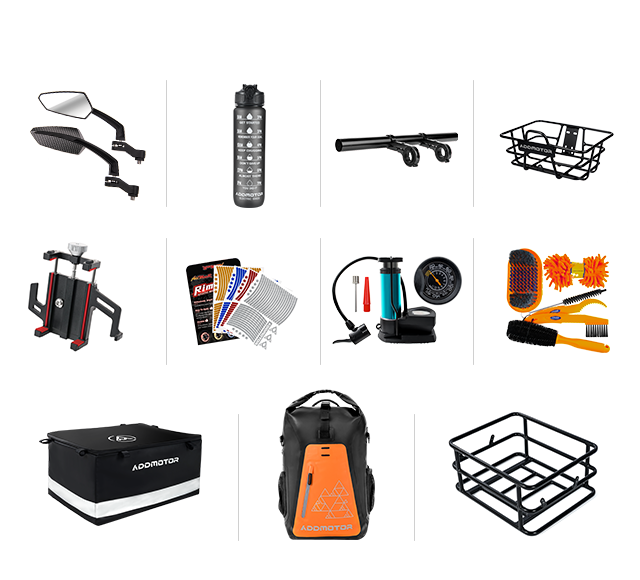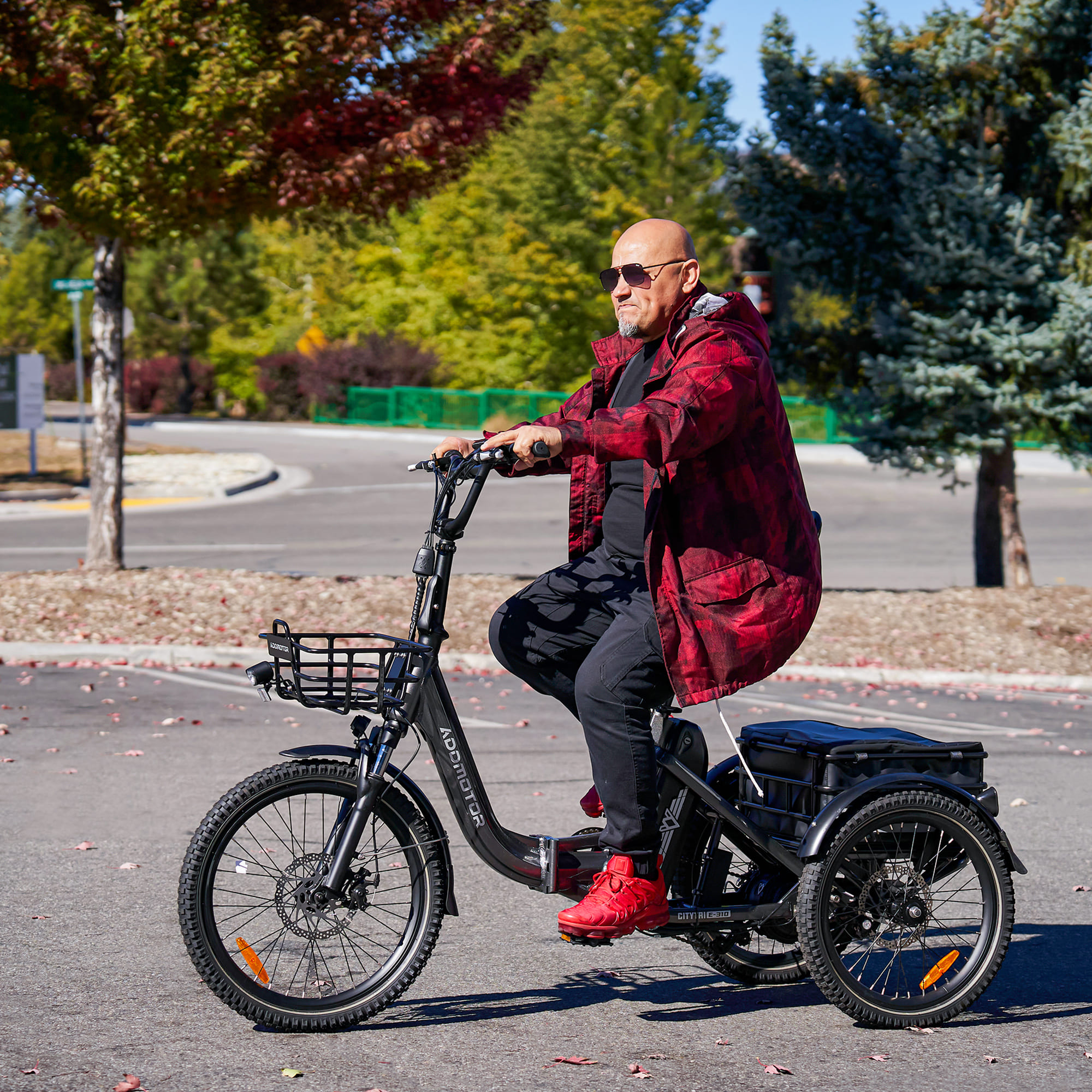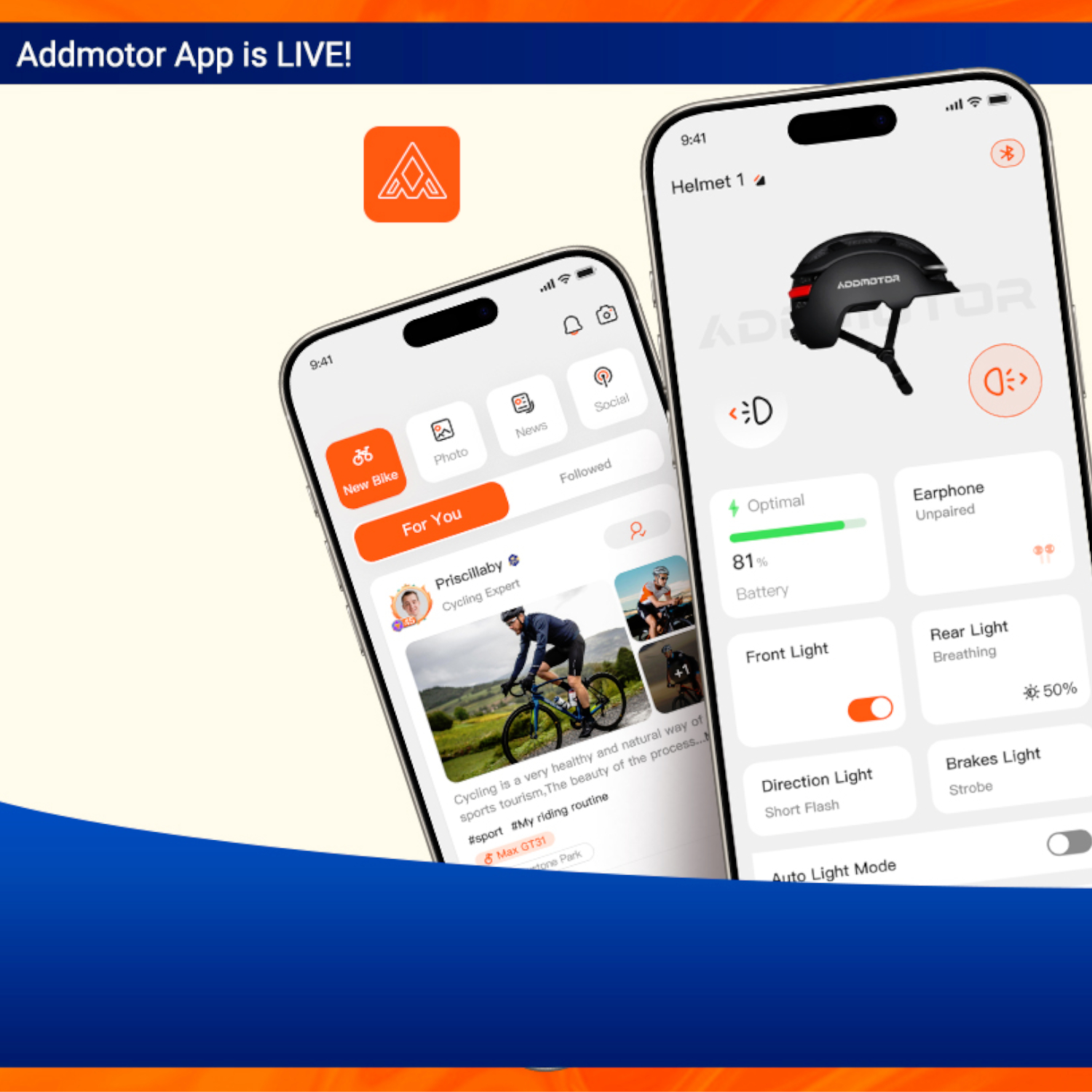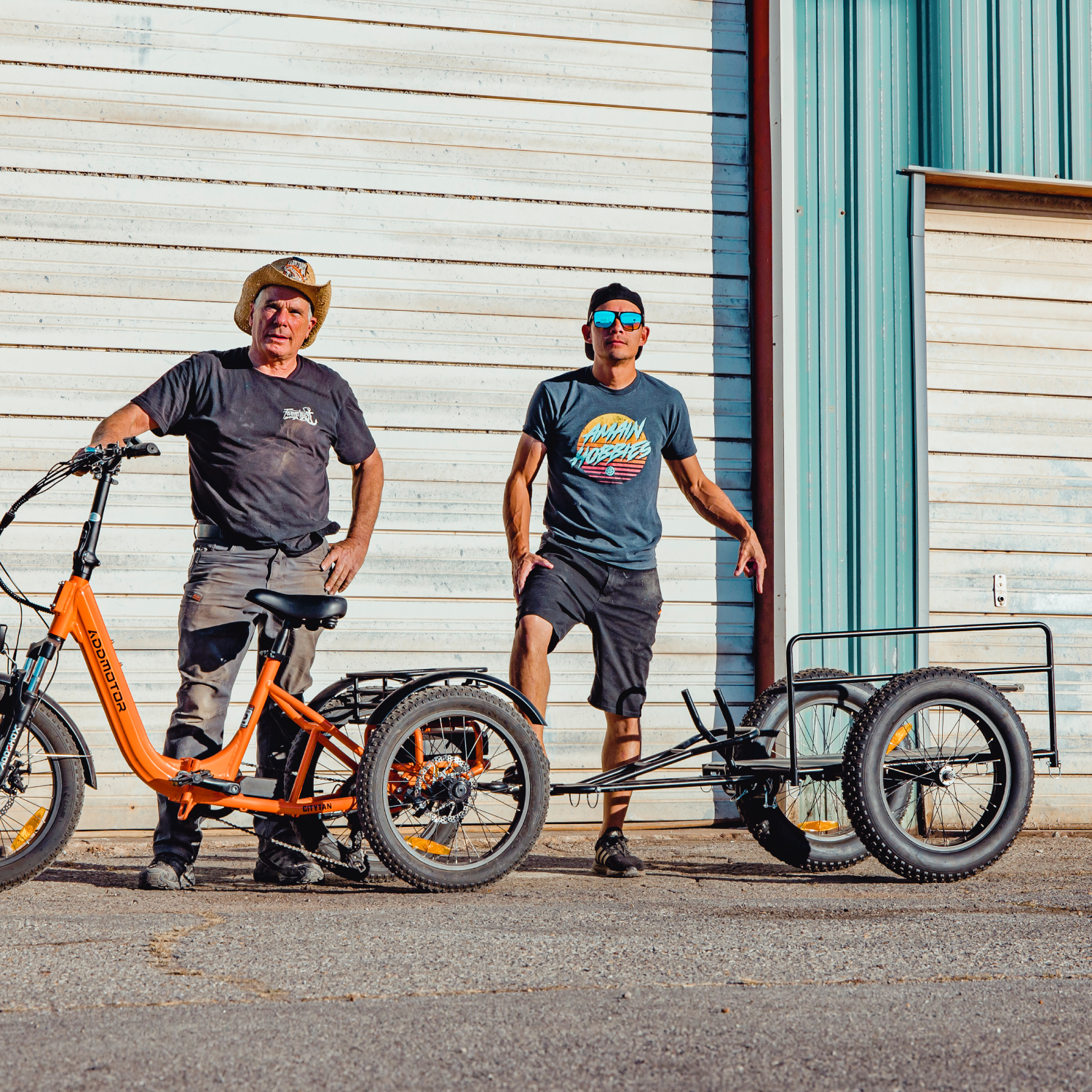Unlocking the Power: How Torque Sensors Enhance Electric Trikes
By Addmotor | 30 October 2024 | 0 Comments
Selecting an electric trike with the right PAS sensor is something that most people overlook. Along with other factors like better battery and motor performance, selecting an electric trike with the best sensor makes a huge difference in the overall quality of your riding experience. Sensors in an electric trike play a critical role in the trike’s responsiveness, helping to determine how the motor reacts to the rider’s pedaling style.
In this blog, we’ll discuss and explain three major types of sensors that you find in the market. Here’s a quick explanation of these sensors and how they work.
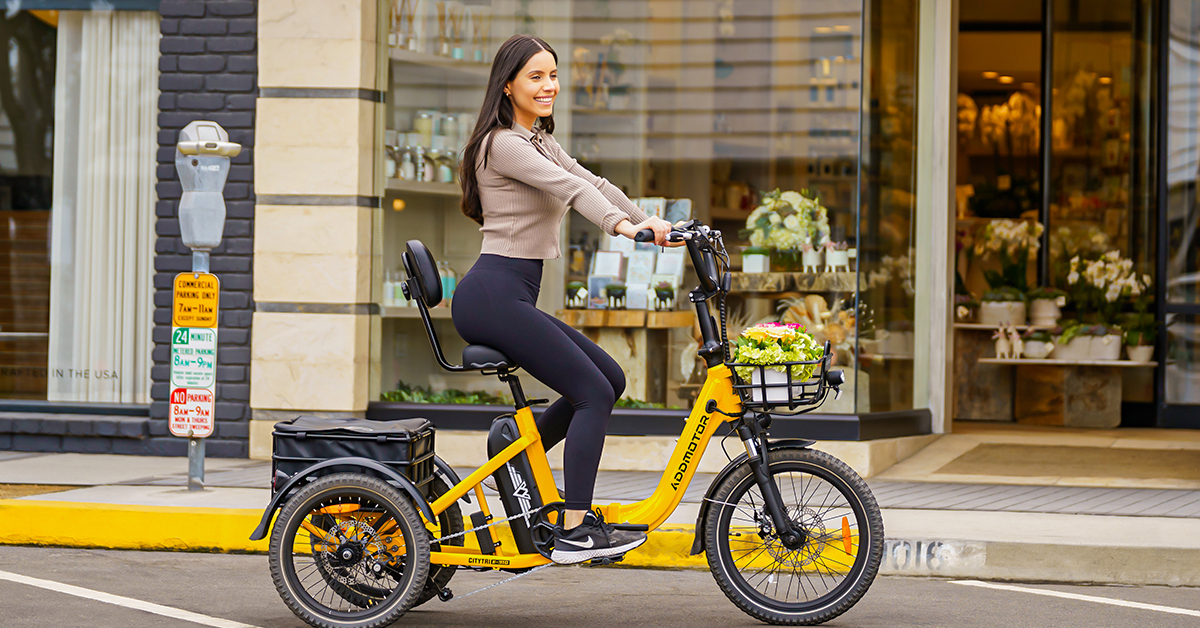
The Addmotor CITYTRI E-310 is an electric trike with torque sensor that is a prime example of how torque sensors elevate the riding experience. With its smooth, responsive torque sensor, the CITYTRI E-310 aligns motor output with the rider's effort, making it feel like an extension of your own pedaling.
CITYTRI E-310 is a suitable option for riders who are looking for a precision control and premium riding experience with a torque sensor. The torque sensor in CITYTRI E-310 makes it the best value electric trike for longer commutes (increasing battery efficiency by 20%), mixed terrains, or any setting where smooth acceleration is important.
CITYTRI E-310 gives riders a more natural feel when the motor assistance kicks in. An electric trike with torque sensor has no jerky movements or delayed response which makes everything feel just right. We’ll explore further specifications of CITYTRI E-310 later in the blog.
Cadence sensors are better suited for riders who are looking for a budget-friendly e-trike option and don’t mind a less responsive experience. They are ideal for short, flat commutes where precision control isn’t necessary, making them a good choice for those new to electric trikes or for casual recreational use.
However, the drawbacks include the dynamic responsiveness of the torque and cadence sensors. They don’t adapt to the rider’s input and may feel overly mechanical on varied terrain or in city traffic where control and adaptability are essential. Many times, riders feel frustrated when the motor assistance kicks in at a certain speed, without their will.
Those who value simplicity and want a cost-effective electric trike for casual rides, speed sensor electric trike is the best option for them. They are ideal for flat, consistent surfaces and are often chosen by riders who prefer a leisurely, low-stress ride rather than performance-oriented riding.
The Addmotor CITYTRI E-310 provides superior specs that elevate its performance. With a powerful 750W motor, it matches the Maxfoot MF-30 in motor strength but CITYTRI offers a torque sensor and better range figures than both Maxfoot’s and Mooncool’s range figures.
Designed for convenience, the CITYTRI boasts a compact foldable design, making it easy to transport and store, unlike the Maxfoot MF-30, which lacks this foldability. It’s also lightweight, at 86 lbs, despite including a powerful 48V*20 Ah Samsung lithium-ion battery, offering efficient and long-lasting performance. With a payload capacity of 360 lbs, CITYTRI supports heavy loads comfortably, though Mooncool has a slightly higher capacity at 450 lbs. The compact folded size of 45.3"L x 33.9"W x 28.7"H makes it a practical option for urban environments.
The Addmotor CITYTRI E-310’s torque sensor, for instance, demonstrates how this sensor type can enhance the rider’s connection to the trike and make riding feel effortless and enjoyable.
Along with the best sensor, CITYTRI E-310 is a complete package for those who are looking for long-term battery efficiency, more power, portability, precise control, and ride comfort. CITYTRI E-310 provides significant value and delivers exceptional responsiveness and battery longevity.
In this blog, we’ll discuss and explain three major types of sensors that you find in the market. Here’s a quick explanation of these sensors and how they work.
- Torque Sensors: Measure the pressure applied to the pedals, adjusting motor power based on the rider’s force.
- Cadence Sensors: Measure the rotation of the pedals and trigger motor assistance based on speed, without factoring in pedal pressure.
- Speed Sensors: Measure wheel speed to adjust motor output, focusing on speed rather than pedaling effort or rotation.
In a nutshell, the latest technology among the listed sensors is ‘torque sensor’ which is considered to be the best sensor. In this blog, we’ll explain more about the torque sensor and compare it with the other two sensors too. So, let’s get started with a detailed explanation of the torque sensor and its benefits.- Cadence Sensors: Measure the rotation of the pedals and trigger motor assistance based on speed, without factoring in pedal pressure.
- Speed Sensors: Measure wheel speed to adjust motor output, focusing on speed rather than pedaling effort or rotation.
#1 Torque Sensor: The Premium Choice for Electric Trikes
A torque sensor is often considered the most advanced option for riders. It provides a very smooth and controlled riding experience. Torque sensors measure the force exerted on the pedals by the rider and adjust the motor power accordingly. The transition of motor assistance kicking in is so smooth that a rider hardly notices it. This results in a ride that feels more natural, as the motor’s output aligns closely with the rider’s pedaling effort.Benefits of Torque Sensors
- Smooth Riding Experience:
Torque sensors offer smooth and seamless transitions in power, avoiding the jerky or delayed response that can happen with other sensors. The motor engages gently and proportionally to how hard you pedal, making the ride feel more intuitive.
Torque sensors offer smooth and seamless transitions in power, avoiding the jerky or delayed response that can happen with other sensors. The motor engages gently and proportionally to how hard you pedal, making the ride feel more intuitive.
- Improved Battery Efficiency:
Because power is applied based on the rider's force, torque sensors conserve energy. This efficient energy usage extends battery life, making it ideal for longer commutes.
Because power is applied based on the rider's force, torque sensors conserve energy. This efficient energy usage extends battery life, making it ideal for longer commutes.
- Enhanced Control and Responsiveness:Torque sensors provide more control over speed and acceleration, which is especially useful on variable terrains or in crowded areas.
Electric Trike with Torque Sensor: Addmotor CITYTRI E-310

The Addmotor CITYTRI E-310 is an electric trike with torque sensor that is a prime example of how torque sensors elevate the riding experience. With its smooth, responsive torque sensor, the CITYTRI E-310 aligns motor output with the rider's effort, making it feel like an extension of your own pedaling.
CITYTRI E-310 is a suitable option for riders who are looking for a precision control and premium riding experience with a torque sensor. The torque sensor in CITYTRI E-310 makes it the best value electric trike for longer commutes (increasing battery efficiency by 20%), mixed terrains, or any setting where smooth acceleration is important.
CITYTRI E-310 gives riders a more natural feel when the motor assistance kicks in. An electric trike with torque sensor has no jerky movements or delayed response which makes everything feel just right. We’ll explore further specifications of CITYTRI E-310 later in the blog.
#2 Cadence Sensor: An Affordable but Limited Option
Cadence sensors measure pedal rotation rather than force. Instead of sensing torque, cadence sensors use a simpler mechanism that detects how fast you’re pedaling and sends signals to the motor to activate assistance based on rotation speed, not pedal pressure. While cadence sensors are affordable, they lack the precision and responsiveness of torque sensors. There are many limitations regarding cadence sensors, let’s have a closer look to understand them better.Limitations of Cadence Sensors:
-Delayed Power Response: Cadence sensors are not as snappy as torque sensors. They may take a second or two to activate the motor once it detects pedaling. You’ll feel a jerky moment especially while riding in streets or uphill.
-Reduced Battery Efficiency: Cadence sensors apply consistent power regardless of how hard you’re pedaling. This can drain the battery faster than a torque sensor, as power isn’t adjusted based on real-time need.
-Limited Control Over Speed and Power: With cadence sensors, the motor assistance is less fine-tuned.. This lack of fine control may feel uncomfortable, especially in situations where precise speed control is needed.
-Reduced Battery Efficiency: Cadence sensors apply consistent power regardless of how hard you’re pedaling. This can drain the battery faster than a torque sensor, as power isn’t adjusted based on real-time need.
-Limited Control Over Speed and Power: With cadence sensors, the motor assistance is less fine-tuned.. This lack of fine control may feel uncomfortable, especially in situations where precise speed control is needed.
Electric Trike with Cadence Sensor: Mooncool TK1
The Mooncool TK1 is an electric trike with cadence sensor. It’s a folding electric trike that uses a cadence sensor, making it an affordable choice for those who don’t require responsive motor engagement. However, riders may notice the delayed response time and a “less connected” feel, especially in stop-and-go riding. The TK1’s cadence sensor is best suited for simple, flat-terrain rides without much variation.Cadence sensors are better suited for riders who are looking for a budget-friendly e-trike option and don’t mind a less responsive experience. They are ideal for short, flat commutes where precision control isn’t necessary, making them a good choice for those new to electric trikes or for casual recreational use.
#3 Speed Sensor: Basic and Minimalistic Approach
Speed sensors represent a simpler approach to motor engagement, measuring the wheel’s rotational speed to activate motor assistance. Unlike torque and cadence sensors, speed sensors engage the motor based on the speed of the wheel, regardless of the pedaling style or intensity. Usually, it has been observed that the companies use a specific speed limit after which the motor assistance kicks in.Advantages and Drawbacks of Speed Sensors
The only advantage of having a speed sensor is that it makes your electric trike more simple to use, which also makes them an affordable option and they’re easy to maintain. They can perform well on flat, predictable terrains where constant speed is required.However, the drawbacks include the dynamic responsiveness of the torque and cadence sensors. They don’t adapt to the rider’s input and may feel overly mechanical on varied terrain or in city traffic where control and adaptability are essential. Many times, riders feel frustrated when the motor assistance kicks in at a certain speed, without their will.
Electric Trike with Speed Sensor: Maxfoot MF-30
The Maxfoot MF-30, an fat tire electric trike with speed sensor, offers a basic riding experience that is ideal for leisurely, flat-terrain rides. While it provides motor assistance based on speed, it lacks the fine control that torque sensors offer, which could make it feel unresponsive on steep inclines or in crowded areas.Those who value simplicity and want a cost-effective electric trike for casual rides, speed sensor electric trike is the best option for them. They are ideal for flat, consistent surfaces and are often chosen by riders who prefer a leisurely, low-stress ride rather than performance-oriented riding.
Comparative Analysis of CITYTRI E-310, TK1, & MF-30
Along with sensors, there are a lot of other factors that you need to consider before buying an electric trike. A mere sensor won’t do any good if it isn’t backed up by a powerful motor and other features.| Feature | Addmotor CITYTRI E-310 | Mooncool TK1 Folding Electric Trike | Maxfoot MF-30 |
| Sensor type | Electric trike with Torque sensor | Electric trike with Cadence sensor | Electric trike with Speed sensor |
| Motor Power | 750W motor | 500W motor | 750W motor |
| Battery | 48V*20 Ah Samsung lithium-ion | 48V*14.5 Ah lithium-ion | 48V*20 Ah lithium-ion |
| Range | Up to 90 miles | 35-70 miles | 85 miles |
| Top Speed | 20 mph | 16 mph | (data not available) |
| Payload Capacity | 360 lbs | 450 lbs | 350 lbs |
| Weight | 86 lbs (including batteries) | 89.9 lbs | 90 lbs |
| Foldability | Yes, compact design | Yes | No |
| Folded size | 45.3"L x 33.9"W x 28.7"H | 39.4”L x 30.3”W x 29.5”H | N/A |
| Unfolded size | 70"L x 29"W x 44.5"H | 66”L x 29”W x 39”H | 74.5"L x 34”W x 40.5”H |
| Frame | All Aluminum alloy frame | Aluminum+Hiten Steel | Aluminum alloy |
| Tires | 20" x 2.4" Front / 18" x 2.4" Rear | 20” x 3” tires | 24” front, 20” back |
| Suspension | Full suspension (front and rear) | Coil Spring Structure | Suspension fork |
| Braking System | Triple Tektro mechanical disc brakes | Hydraulic Disc Brake | Disc Brake |
| Price | $1,899 | $1,599.99 | $2,299 |
| Free Accessories | Mini bike pump, Addmotor mirrors, cleaning tools kit, rear cargo basket. | One accessory mystery box | Nothing |
The Addmotor CITYTRI E-310 provides superior specs that elevate its performance. With a powerful 750W motor, it matches the Maxfoot MF-30 in motor strength but CITYTRI offers a torque sensor and better range figures than both Maxfoot’s and Mooncool’s range figures.
Designed for convenience, the CITYTRI boasts a compact foldable design, making it easy to transport and store, unlike the Maxfoot MF-30, which lacks this foldability. It’s also lightweight, at 86 lbs, despite including a powerful 48V*20 Ah Samsung lithium-ion battery, offering efficient and long-lasting performance. With a payload capacity of 360 lbs, CITYTRI supports heavy loads comfortably, though Mooncool has a slightly higher capacity at 450 lbs. The compact folded size of 45.3"L x 33.9"W x 28.7"H makes it a practical option for urban environments.
Concluding Thoughts
In this blog, we discussed how torque sensors add more value to your riding experience compared to other two types of sensors: cadence and speed sensors. An electric trike with a torque sensor offers more control and better comfort than any other sensor type. Moreover, it gives you more confidence and energy efficiency in various riding conditions.The Addmotor CITYTRI E-310’s torque sensor, for instance, demonstrates how this sensor type can enhance the rider’s connection to the trike and make riding feel effortless and enjoyable.
Along with the best sensor, CITYTRI E-310 is a complete package for those who are looking for long-term battery efficiency, more power, portability, precise control, and ride comfort. CITYTRI E-310 provides significant value and delivers exceptional responsiveness and battery longevity.
Leave a Reply
Your email address will not be published.Required fields are marked. *
Latest Stories

